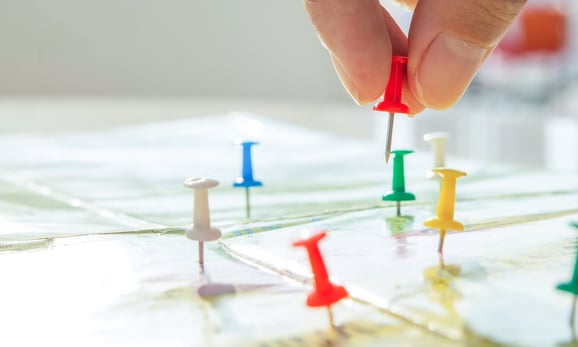In the same way ghost kitchens rose to prominence during COVID-19, hub stores could soon follow. The reason behind them is the same: changing customer fulfillment demands. People are finding more comfort and convenience in ordering through digital channels and picking up curbside or getting stuff delivered to their homes. When it comes to consumer merchandise, BOPIS and ship-from-store orders will only increase as time goes on. Retailers need to harness new fulfillment strategies, and hub stores will play a pivotal role.
What is a hub store?
Hub stores are all-in-one retail locations, catering to the rise of omnichannel fulfillment. A customer has several options for how they can interact with a hub store:
- Visit and shop as they normally would at a retail storefront
- Order ahead and participate in curbside pickup
- Order online and have items shipped to that store location for pickup
Hub stores provide the options customers want when they make a purchase, to maximize convenience. But they also serve another important purpose on the retailer side. These brick-and-mortar locations — often large and located in busy retail areas — serve as restocking and supply hubs for smaller area stores.
The store-as-a-hub-model is already changing the retail landscape. Major retailers like Target, Williams Sonoma, Best Buy, and others have begun recognizing the power of fulfillment hubs as consumer preferences and shopping habits shift.

The role of hub stores within the fulfillment network
With the rise in BOPIS and ship-to-home in addition to traditional in-store shopping, retailers need to reevaluate how they’re getting product into the hands of customers. More important, they need to look at ways to optimize costs and simplify logistics in doing so. Hub stores offer a change to marry convenience with cost-efficiency, for both retailers and shoppers.
The key in utilizing hub stores effectively is to rethink the traditional store network. It’s not enough to see individual stores within a geographic area. Instead, retailers need to explore the synergies that exist between these stores and the many omnichannel fulfillment options customers expect from them. Embracing a hub store model means seeing the store network for what it is: a network.
It’s important to note the difference between hub stores and “dark stores.” Where dark stores exist solely for BOPIS and curbside fulfillment, hub stores maintain the model that shoppers are familiar with. Customers can step in, walk around, chat with an employee, and ultimately increase their purchase with as much as they put into their cart. While dark stores also serve a purpose in the store network model, hub stores offer an invaluable opportunity as shoppable destinations.

Retailing strategies for optimizing hub stores
Retailers are still figuring out omnichannel fulfillment. Some are better at it than others — but every major retailer is quickly connecting the dots between digital shopping and physical fulfillment, as well as the function of the store network in fulfilling orders. It can be a bit of a Rube Goldberg machine, but it’s a matter of putting the pieces together in a way that’s succinct and organized.
Retailers need to remember that hub stores serve two purposes: to support customer omnichannel fulfillment and to support other stores within the local network of locations. Here’s a look at just some of the ways they can do both:
-
Transfer inventory between different local-area hub stores
-
Push sales to local-area stores with available inventory
-
Capture in-store sales from online shoppers through omnichannel fulfillment
-
Provide local delivery originating from destinations nearest the point of fulfillment
-
Enable inventory routing, to make complete orders available at a single location
The key to each of these strategies lies in a well-orchestrated back-end system — one capable of managing order flow, inventory, and the many variables that affect fulfillment. As hub stores rise to prominence, this back-end system is essential in ensuring these stores serve the role retailers (and customers) need them to.
Hub stores don’t signal the end of brick-and-mortar retail. In fact, they could entrench physical locations even more so as localized fulfillment centers become a cornerstone of omnichannel strategies. But to benefit accordingly, retailers need to leverage hub stores into a shifting omnichannel model — one that maximizes costs and makes BOPIS effortless for customers. Nextuple helps retailers orchestrate the back-end systems to create a cohesive omnichannel experience. Moving forward, this framework and the hub stores that support it will become critical drivers of a successful omnichannel strategy.
Learn more about the Nextuple Platform with this FREE download!
.png?width=250&height=56&name=nextuple_logo_vector%20(4).png)

